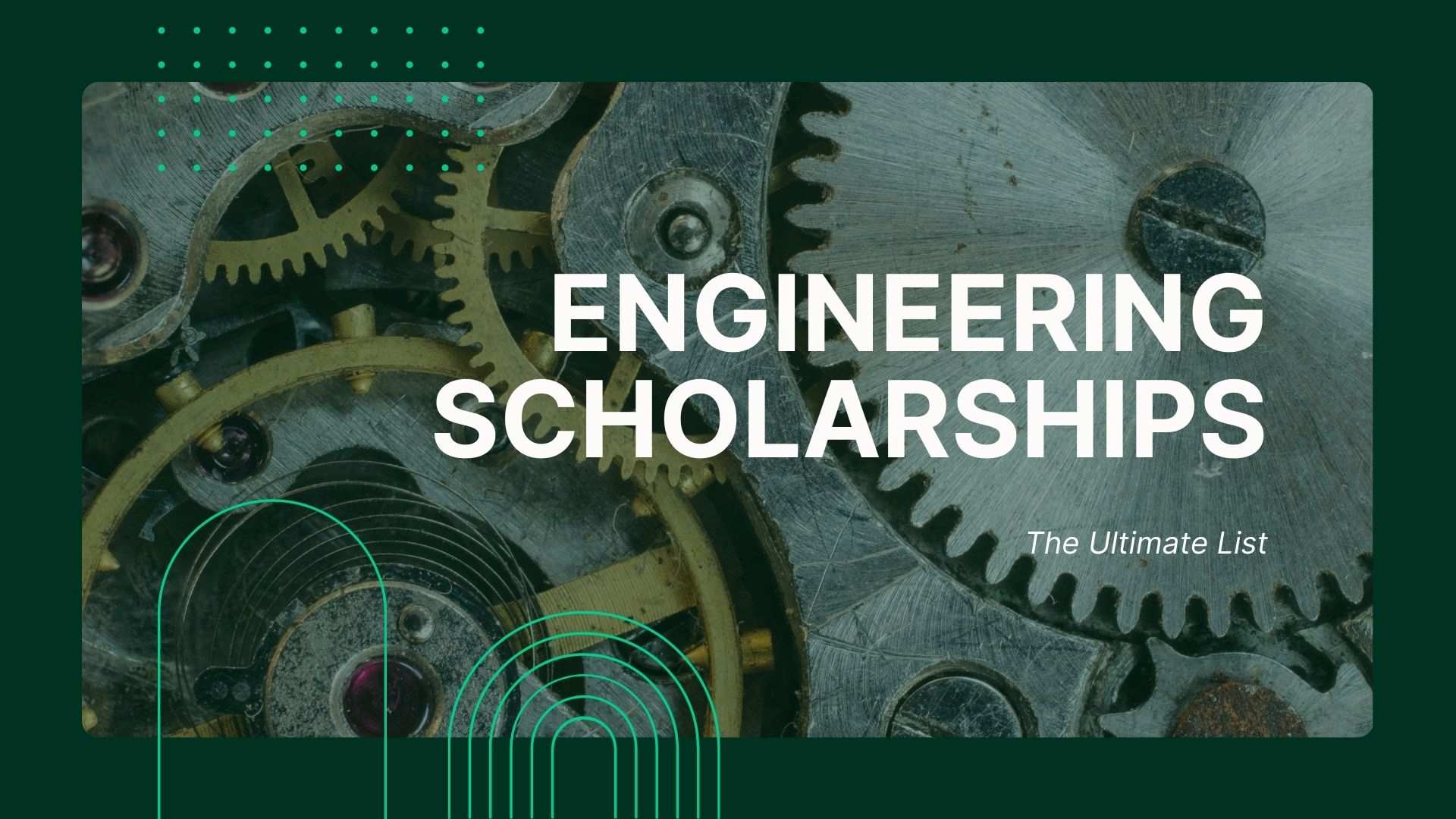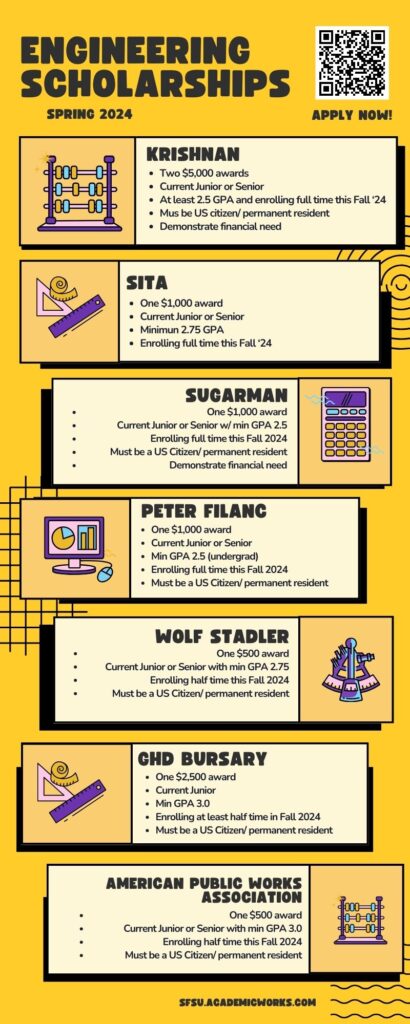I still remember the knot in my stomach. It was a feeling that had become an unwelcome companion throughout my senior year of high school, and it lingered even as acceptance letters started to trickle in. Each thick envelope brought a rush of excitement, quickly followed by a cold dose of reality: the tuition figures. Dreams of building bridges, designing the next generation of renewable energy systems, or coding intricate software suddenly felt like luxuries I couldn’t afford. My family, bless their hearts, had always encouraged my passion for tinkering and problem-solving, but the sheer cost of an engineering degree felt like an insurmountable wall. This wasn’t just about me; it was about the years of sacrifice my parents had already made, and the thought of burdening them further was almost too much to bear.
That’s where my journey into the labyrinth of engineering scholarships began. It wasn’t a glamorous quest; it was a grind. Hours spent hunched over a laptop, eyes blurring from staring at countless application forms, each one asking for a piece of my story, my grades, my aspirations. There were moments of despair, moments where I almost gave up, convinced that these elusive scholarships were only for a select few, for those with perfect scores or extraordinary achievements. But I pressed on, fueled by the vision of myself, not just surviving, but thriving in a university lab, turning abstract ideas into tangible solutions. And I want to tell you, from the bottom of my heart, that if I could navigate that path, you absolutely can too.
Think of an engineering scholarship not just as a check that covers tuition, but as an investment in your future. It’s a testament to your potential, a vote of confidence from an organization or individual who believes in your ability to make a difference. Beyond the financial relief, securing a scholarship offers something equally valuable: validation. It tells you that your hard work, your curiosity, your late nights spent on projects, and your dedication to understanding how the world works, are recognized and appreciated. It frees up your mental energy, allowing you to focus on your studies, on those challenging problem sets, and on the exciting group projects that are the true essence of an engineering education, rather than constantly worrying about the mounting debt.
So, where do you even begin this hunt for engineering scholarships? It can feel overwhelming, like searching for a needle in a haystack, but trust me, there are strategies. My first piece of advice is to cast a wide net. Don’t limit yourself to just the big, national scholarships. While those are certainly worth applying for, the competition is fierce. Think local, think specific.
My starting point was often my university’s financial aid office. Once I had a few acceptance letters in hand, I’d dive deep into each institution’s website, looking specifically for departmental scholarships within the engineering faculty. These are often less competitive because they’re only open to students admitted to that particular program. I remember finding a gem that way: a scholarship specifically for students pursuing mechanical engineering, funded by an alumnus who wanted to support the next generation of innovators. It wasn’t a full ride, but every little bit added up, reducing that daunting final number.
Beyond the universities themselves, a treasure trove of opportunities lies within professional organizations. If you’re passionate about electrical engineering, look up the IEEE (Institute of Electrical and Electronics Engineers). Mechanical? ASME (American Society of Mechanical Engineers) is your friend. Civil? ASCE (American Society of Civil Engineers). For women in engineering, the Society of Women Engineers (SWE) is an incredible resource, offering numerous scholarships and a supportive community. There are also organizations like NSBE (National Society of Black Engineers) and SHPE (Society of Hispanic Professional Engineers) that actively work to support and fund students from underrepresented backgrounds in STEM. These groups aren’t just about money; they offer mentorship, networking, and a sense of belonging, which are invaluable as you embark on your engineering journey. I personally benefited from a regional SWE scholarship, and the connections I made through their events were just as impactful as the financial award.
Don’t forget local opportunities either. My hometown had a community foundation that offered scholarships to local students, often funded by generous local businesses or individuals. Your parents’ employers might even have scholarship programs for dependents. Small businesses in your area, rotary clubs, and even religious organizations often have funds set aside to help local students pursue higher education. These might not be advertised on huge national websites, but a quick search on your town’s official website or a visit to your high school guidance counselor can reveal a surprising number of local gems. I found a small but significant scholarship through my local Rotary Club, and the application process was far less daunting than some of the national ones.
Now, let’s talk about the different kinds of engineering scholarships you might encounter. It’s not a one-size-fits-all situation. There are merit-based scholarships, which primarily look at your academic performance – your GPA, your test scores, and the rigor of your high school curriculum. If you’ve excelled in your science and math classes, these are definitely worth pursuing. Then there are need-based scholarships, which consider your family’s financial situation. You’ll usually need to fill out a FAFSA (Free Application for Federal Student Aid) or similar forms to demonstrate your financial need.
Beyond these broad categories, many scholarships are highly specific. You might find scholarships for students pursuing a particular engineering discipline, like aerospace engineering, biomedical engineering, computer science, or environmental engineering. Some are targeted towards specific demographics – women in engineering, underrepresented minority groups, first-generation college students, students with disabilities, or veterans. There are also scholarships that look for specific interests or experiences, like those with a strong background in robotics, sustainable energy projects, or community service. I even came across one that favored students who had worked part-time during high school, recognizing the effort and responsibility involved. The key here is to find scholarships that align perfectly with your story, your background, and your aspirations. The more specific the scholarship, the smaller the applicant pool, and the better your chances.
Once you’ve identified potential scholarships, the real work begins: crafting a winning application. This is where you get to tell your story, to show them who you are beyond the numbers on your transcript.
Your academic record, of course, is the foundation. Strong grades in STEM subjects are crucial for engineering scholarships. But grades alone aren’t enough. What truly sets an application apart is the essay. This is your chance to shine, to demonstrate your passion, your curiosity, and your unique perspective. Don’t just regurgitate your resume; tell a story. I remember one essay prompt asked about a time I faced a significant engineering challenge. Instead of writing about a complex coding project, I chose to write about building a rickety go-kart with my dad in our garage. It was a disaster, a true testament to trial and error, but through that process, I learned about force, friction, and the joy of seeing something you built actually move. I talked about the scraped knees, the frustrated sighs, and the ultimate triumph of a sputtering engine. It wasn’t perfect, but it was my story, and it showed my genuine, messy, human connection to engineering.
When writing your essay, be authentic. Don’t try to guess what the scholarship committee wants to hear. Instead, think about what truly excites you about engineering. Is it the challenge of solving complex problems? The potential to create something new that helps people? The beauty of elegant design? Whatever it is, articulate it clearly and passionately. Show, don’t just tell. Instead of saying, "I am passionate about renewable energy," describe a specific project you worked on, a book you read that inspired you, or a problem in your community that you believe renewable energy could solve. And for goodness sake, proofread meticulously. A well-written essay, free of typos and grammatical errors, reflects attention to detail – a quality highly valued in engineers. Ask a trusted teacher, mentor, or family member to read it over for you. A fresh pair of eyes can catch things you’ve missed.
Letters of recommendation are another critical component. Don’t just pick any teacher; choose someone who knows you well, who has seen your work ethic and your intellectual curiosity firsthand. Ideally, this would be a math or science teacher, or perhaps a mentor from an extracurricular club like robotics or a science fair. When you ask for a letter, do so politely and well in advance of the deadline. Provide them with everything they need: your resume, a list of your achievements, the specific scholarship requirements, and even a draft of your essay so they can tailor their letter to highlight relevant qualities. Make it easy for them to write a strong letter for you. I always provided my recommenders with a "brag sheet" detailing my accomplishments and what I hoped to achieve, and it seemed to help them craft more specific and impactful letters.
Your resume or CV, even as a high school student, is important. It’s not just about listing jobs; it’s about showcasing relevant experiences. Did you participate in a science fair? List it. Are you part of a robotics club? Absolutely. Volunteer for an organization that uses technology? Put it down. Even seemingly unrelated experiences, like a part-time job in customer service, can demonstrate valuable skills like problem-solving, teamwork, and responsibility. Frame your experiences to highlight the skills that an engineer needs. For example, instead of just "Babysitter," you might say "Managed schedules and activities for three children, demonstrating organizational skills and responsibility."
Extracurricular activities and leadership roles also play a huge part. Scholarships aren’t just looking for academic robots; they want well-rounded individuals who contribute to their communities. Whether it’s playing a sport, volunteering, participating in debate club, or leading a school organization, these activities demonstrate your ability to balance multiple responsibilities, work in teams, and take initiative. These are all qualities that make for a successful engineer.
The application process itself can feel like a marathon. My advice? Get organized. Create a spreadsheet with all the scholarships you’re applying for: the name, the deadline, the required materials (transcript, essay, letters of recommendation), and the current status. This will help you keep track and avoid missing crucial deadlines. Start early. Many scholarships open applications months before the deadline, and getting a head start reduces stress and allows you to refine your applications.
Prepare for rejection. It’s an inevitable part of the scholarship hunt. I received far more "no"s than "yes"s, and each one stung a little. But I learned to see it not as a personal failure, but as a numbers game. Every rejection simply meant I hadn’t found the right fit yet, and it pushed me to apply for even more. Don’t put all your eggs in one basket; apply to as many relevant scholarships as you realistically can. Tailor each application. While it might be tempting to use a generic essay for multiple scholarships, take the time to customize it for each one. Reference the organization’s mission, the specific criteria, or the type of engineering they support. This shows genuine interest and effort.
Once you’ve secured a scholarship, your journey isn’t over. Most scholarships have requirements for maintaining eligibility, such as maintaining a certain GPA. Make sure you understand and meet these expectations. If your scholarship is from a specific company or organization, take the opportunity to network with them. Attend their events, send thank-you notes, and keep them updated on your progress. These relationships can open doors to internships, mentorships, and even future employment opportunities. Many of the connections I made through my scholarships proved invaluable during my internship searches later in college.
Let’s also quickly touch upon some common mistakes to avoid. Firstly, not reading the instructions carefully. This is perhaps the biggest pitfall. Missing a required document or exceeding the word count for an essay can lead to immediate disqualification, no matter how brilliant your application is. Secondly, submitting generic essays. As I mentioned, personalization is key. Thirdly, missing deadlines. A late application is almost always a rejected application. Fourthly, only applying to the "big" scholarships. The smaller, more niche scholarships often have less competition and a higher chance of success. Finally, giving up too soon. The scholarship search is a marathon, not a sprint. Persistence is your most valuable asset.
My path to becoming an engineer was paved not just with hard work in the classroom, but with the relentless pursuit of opportunities that would make that dream financially possible. The weight lifted from my shoulders when I finally received that acceptance letter, accompanied by a financial aid package that included several scholarships, was immeasurable. It wasn’t just about the money; it was about the belief that others had in my potential, and it gave me the confidence to dive headfirst into my studies.
If you’re reading this, grappling with those same anxieties about the cost of an engineering education, please know that you’re not alone, and there is hope. Your passion, your intelligence, and your dedication are valuable assets, and there are organizations out there looking to invest in people just like you. Roll up your sleeves, organize your efforts, tell your story with conviction, and don’t be afraid to ask for help. The journey might be challenging, but the reward – the chance to pursue your engineering dreams without the crushing burden of debt – is absolutely worth every ounce of effort. Your future in engineering is waiting; go out there and claim it.



